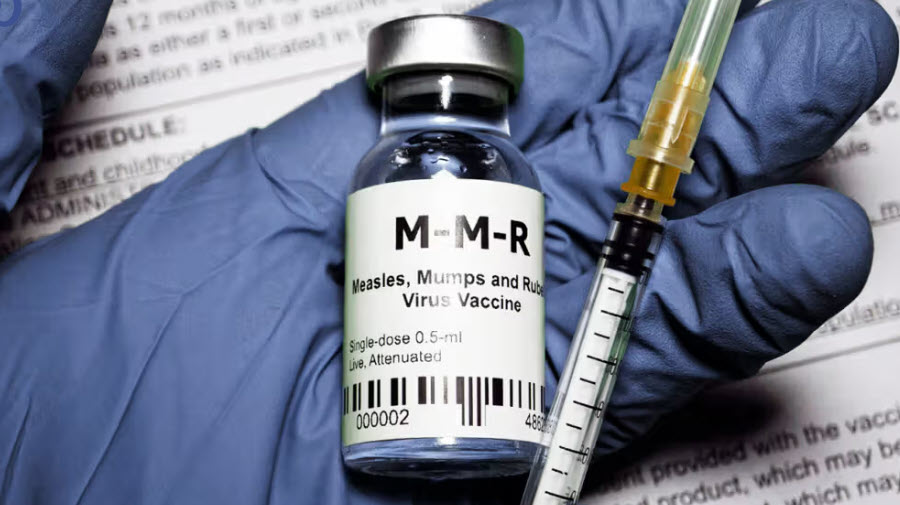Comal County’s Public Health Department says some adults may need another measles, mumps and rubella (MMR) shot as a measles outbreak that began in Gaines County appears poised to spread throughout South Central Texas.
A booster shot is now recommended for college students, health care workers, international travelers and anyone planning to become pregnant.
Only residents in these categories will need to receive another dose of the MMR vaccine.
Pregnant women, parents or guardians of infants, and those with weakened immune systems are advised to contact health care providers regardless of their immunization histories.
Anyone uncertain about their vaccination status should ask their physician to decide whether a second booster is required or whether to perform an antibody titer test to check for immunity.
Anyone unvaccinated or partially vaccinated should contact their doctor for possible post-exposure protection.
Multiple Measles ‘Exposures’
A woman from Gaines County who had received her first measles immunization stopped at a Buc-ee’s convenience store on I-35 in the Creekside area between 9 a.m. and noon Feb. 16.
She also visited Texas State University in San Marcos and the University of Texas San Antonio between Feb. 14-15.
It is unclear whether the woman’s case of measles was confirmed before, during or after her visit. Public Health sounded the alarm Sunday.
Today, the Texas Department of State Health Services (DSHS) said multiple health departments in Central and South Central Texas are reporting measles exposures associated with the ongoing outbreak in the South Plains region of Texas.
Public Health said measles symptoms can take seven to 21 days to appear after a person is exposed to the virus. They include a high fever of 104 degrees; cough, runny nose, and red, watery eyes; and a rash that spreads from head to toe.
About the MMR
The MMR vaccine is 97% effective with two doses. The first dose is 93% effective.
MMR is generally considered to provide lifelong immunity for measles and rubella, but efficacy for mumps may wane over time.
In 1989, the Centers for Disease Control (CDC) recommended that MMR be changed from one dose to two doses.
Anyone born before 1957 is considered immune from the virus.
Immunizations are available for infants and children at many doctors’ offices and clinics.
The CDC and DSHS recommend children receive one dose of MMR at 12 to 15 months of age and another at four to six years of age.
Children too young to be vaccinated are more likely to have severe complications if they are infected with the measles virus.
Each MMR dose lowers the risk of infection and the severity of illness if infected.
CVS and Walgreens now offer the MMR vaccine for patients ages 14 and older.
CVS spokesperson Shannon Dillon said the MMR vaccine is covered by some health insurance plans.
Contagion
Measles is a highly contagious virus that spreads through the air and can linger for up to two hours after an infected person leaves an area.
Sowjanya Mohan, M.D., infectious diseases specialist and Chief Medical Officer for Resolute Baptist Hospital in New Braunfels and Baptist Health System in San Antonio, said if a contagious person enters a room with 100 people, 90 of them will likely get the measles.
“That is why it’s such a public health concern,” she said. “But if you are vaccinated, chances are, (even) if it was a long time ago, you may get sick, but you won’t get very ill. Which can happen in unvaccinated people, especially children, so we encourage vaccination and then just good hand hygiene as well, as well as respiratory hygiene.
“If you’re feeling sick or somebody else is sick make sure you’re wearing a mask and isolating yourself until your symptoms are resolved. So if you have had exposure, you can develop measles up to 14 days after exposure to someone with measles. And if you have any health issues that come up during that time, call your health care provider and seek medical care.”
Measles Symptoms
DSHS said the virus is transmitted by direct contact with infectious droplets or by airborne spread when an infected person breathes, coughs, or sneezes.
Illness onset (high fever, cough, runny nose, and red, watery eyes) begins a week or two after someone is exposed.
A few days later, the telltale rash breaks out as flat, red spots on the face and then spreads down the neck and trunk to the rest of the body.
A person is contagious about four days before the rash appears to four days after. People with measles should stay home from work or school during that period.
About the Outbreak
On Feb. 21, DSHS reported an outbreak of measles in the South Plains of Texas.
As of Friday, 90 cases have been identified since late January. Sixteen patients have been hospitalized. Five of the individuals who contracted measles were vaccinated. The remaining 85 cases were either unvaccinated or vaccination status was unknown.
DSHS said it will provide regular updates about the measles outbreak on Tuesdays and Fridays.
Comal ISD
Although Public Health did not release any further information about vaccine rates in Comal County, online records on the DSHS website show that during the school year 2023-24, 94.85% of kindergarten students in Public Health Region 8, which includes Comal County, were vaccinated for measles.
Some 97.68% of seventh graders were completely vaccinated.
More than 3% of Comal County students in grades K-12 have “conscientious objections” filed with the district and are not vaccinated for measles, according to state records.
History of Measles
According to the CDC, the live measles vaccine was licensed in 1963.
In the decade before, an average of 549,000 measles cases and 495 measles deaths were reported annually in the United States.
However, it is likely that three to four million people on average were infected with measles annually; most cases were not reported. Of the reported cases, approximately:
-
- 48,000 people were hospitalized from measles.
- 1,000 people developed chronic disability from acute encephalitis caused by measles annually.
In 2000, measles was declared eliminated from the United States. However, cases and outbreaks still occur every year in the United States. This is because measles is still commonly transmitted in other countries in Europe, the Middle East, Asia, the Americas, and Africa.
Since 2000, the annual number of cases has ranged from a low of 37 in 2004; to a high of 1,282 in 2019. The majority of cases in the United States have been among people who are not vaccinated against measles.




